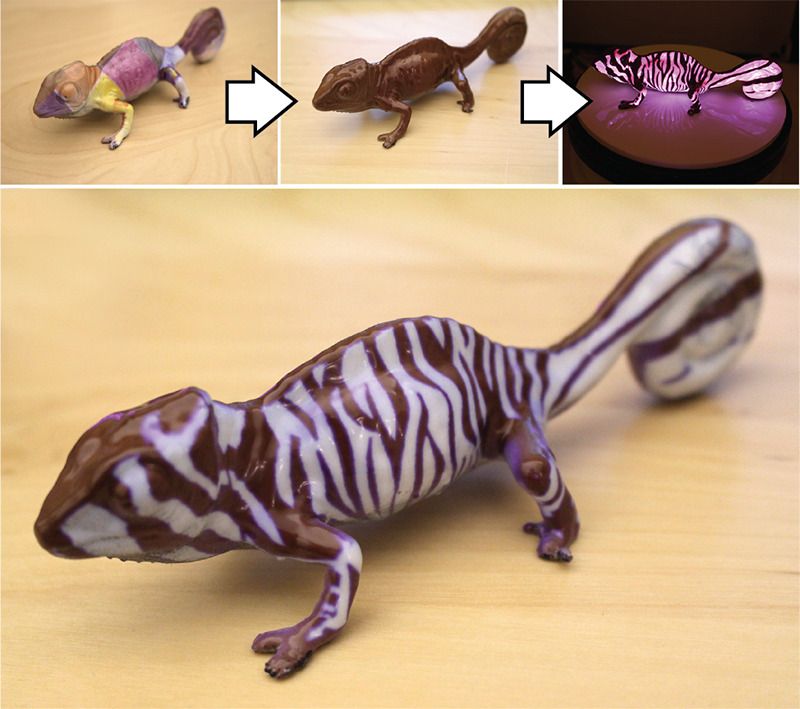The Under Armour Fat Tire GTX uses cutting-edge technology to help you tackle any trail. Taking design inspiration from off-road fat tire bikes, these boots are built on a Michelin outsole with a Wild Gripper rubber compound for excellent traction on a wide variety of terrain. A breathable GORE-TEX membrane provides total waterproof protection, and the UA Charged foam cushioning system delivers ultimate energy return and impact protection. The BOA speed closure system uses a unique click and turn dial and stainless steel laces to lock your feet in place faster than regular laces. These boots also feature a Cupron copper-infused sockliner that wipes out odor-causing bacteria to keep feet fresh. Built with composite textile and foam construction, these comfortable boots won’t let anything stand in your way on the trail.
Page 7395
Sep 13, 2019
Panasonic Introduces Vacuum-Insulated Refrigerator
Posted by Quinn Sena in category: entertainment
Panasonic has introduced what may be the first vacuum-panel-insulated refrigerator in the world. The 17.7 ft3 (501 l) NR-F503TE refrigerator-freezer, introduced in late 2008 in Japan, is insulated with Panasonic’s U-VacuaIV vacuum panels that consist of multiple layers of glass fibers and aluminum films sealed into a vacuum panel. The refrigerator-freezer uses 350 kWh per year, according to the company’s Japanese website (about 25% better than the U.S. federal standard). A larger, 21.3 ft3 (603 l) model, the NR-F603T, uses 440 kWh per year. EBN was unable to learn what type of refrigerant is used except that it is “non-CFC.” Whether the product will be introduced in North America is also not known.
Sep 13, 2019
Bringing light to a halt: Physicists freeze motion of light for a minute
Posted by Quinn Sena in category: physics
Circa 2013 o.o
Physicists have been able to stop something that has the greatest possible speed and that never really stops: light. A decade ago, physicists stopped it very for a short moment. In recent years, this extended towards stop times of a few seconds for simple light pulses in extremely cold gases and special crystals. But now the same researchers extended the possible duration and applications for freezing the motion of light considerably. The physicists stopped light for about one minute. They were also able to save images that were transferred by the light pulse into the crystal for a minute — a million times longer than previously possible.
Close.
Sep 13, 2019
New York Uncovers $1 Billion in Sackler Family Wire Transfers
Posted by Quinn Sena in category: futurism
;-;
In a court filing, the state attorney general’s office says that it has found new account transfers by family members who own Purdue Pharma, the maker of opioids.
Sep 13, 2019
Brain chips could soon give people superintelligence
Posted by Quinn Sena in categories: computing, Elon Musk, neuroscience
Brain-to-computer interfaces and intelligence boosting chips implanted in the brain could soon make their way out of the realms of science fiction and into reality.
Already, some of the biggest tech giants in the industry like Elon Musk and Facebook are working to create brain-computer interfaces.
CBS Chicago recently spoke to Dr. Moran Cerf, a neuroscientist at Northwestern University, who is currently developing a non-invasive computer chip that when implanted in the brain could give an individual super intelligence.
Sep 13, 2019
The missing ‘puzzle’ page of Einstein’s unified theory of everything found
Posted by Quinn Sena in category: futurism
Over 100 new pages of Einstein’s writings, including long-lost calculations, have been made public.
Sep 13, 2019
This New Dye Changes Color When Exposed to UV Light
Posted by Shane Hinshaw in category: futurism
Sep 13, 2019
New A.I. application can write its own code
Posted by Quinn Sena in category: robotics/AI
Circa 2018
Teaching artificial intelligence to code and create software has been a holy grail of the field. The new system, which you can see in action for yourself, is a step in that direction.
Sep 13, 2019
Everything you need to know about superintelligence
Posted by Quinn Sena in category: neuroscience
Basically when the superintelligence happens essentially it could solve m theory in almost seconds.
The concept of superintelligence, the brainchild of Oxford philosopher Nick Bostrom, has been predicted to change humanity as we know it today. Here’s all you need to know about superintelligence.
Sep 13, 2019
Explore 100 Billion Realistic Galaxies with Space Engine
Posted by Quinn Sena in categories: entertainment, space
Space Engine is a free-to-download, procedurally generated simulator that’s ten years in the making. Despite the incomprehensible size of the game’s universe, it was developed by one man. But now, he says, he can’t do it alone.

















